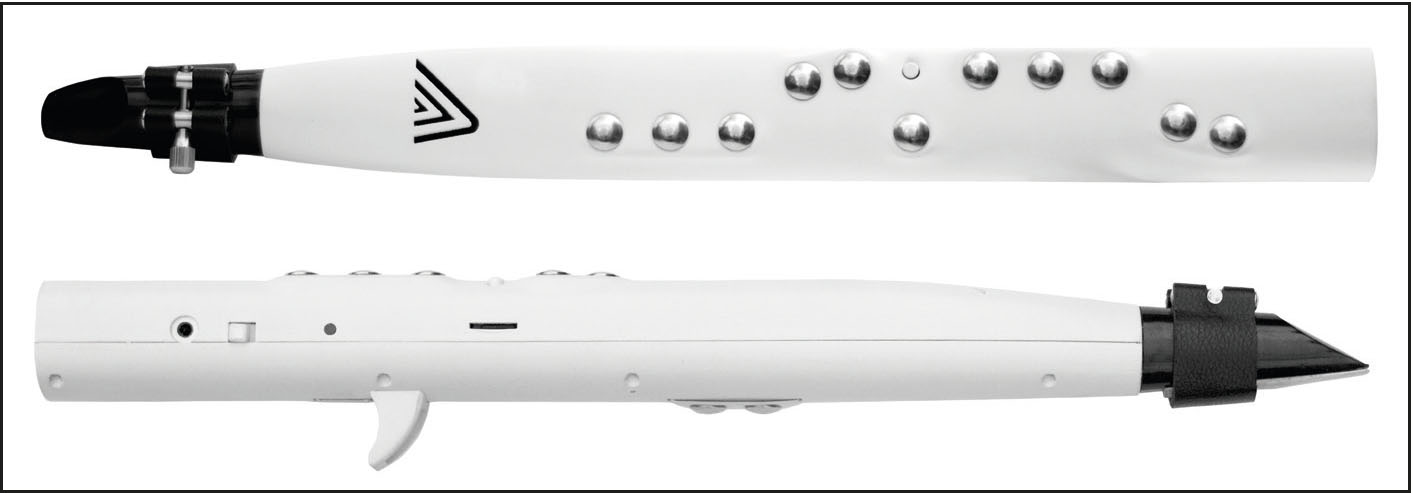
A new solution for the weary parents of beginner saxophonists has emerged from the leafy suburbs of Boston, Massachusetts. The Vindor ES1 is a brand new electronic instrument that promises to silence the squawks and honks of the inexperienced saxophone player forever. But as each passing year sees the announcement (and silent departure) of innumerable technological revolutions, will the Vindor really live up to its big promises and stand the test of time?
The Vindor is the brainchild of Fen Trias, who got the idea shortly after his nine-year-old son took up the clarinet and found the first few hurdles of reed-playing challenging. ‘Painful for everyone involved,’ recounts Trias in an interview with Fast Company. Fen posted an ad on Craigslist to find a saxophonist to help him with his idea. He found musician Joel Edinberg, who incidentally has a master's degree in physics and a background in telecommunications, and together they launched a successful Kickstarter campaign to crowdfund the Vindor, raising $23,000 (£17,500) in pledges in under a month during the autumn of 2017.
Since its beginnings the Vindor has come a long way. From the initial idea in Fen's mind, to the prototyping stage – an early model was dubbed the ‘trashophone’, a bodged together contraption of wood and wires – to the present finished Vindor ES1; a sleek, white device that looks like a recorder from a utopian future. As well as being designed to eliminate those unwanted sounds that have cursed reed players since its inception, the team at Vindor wanted the instrument to be affordable, with the aim of producing it for $200 (£152), making it accessible from a financial point of view as well as a technical one.
To keep the Vindor cheap, it has a pared-down interface – with just the essential keys for any beginner player – which consists of brushed aluminium touch buttons as opposed to mechanical ones. Ergonomically, the Vindor won't feel exactly like a real saxophone, and ultimately the player of a Vindor will need to upgrade as they improve in their playing. By the time players are ready to graduate to a traditional saxophone, they should already be accustomed to tonguing and modulating air flow as the instrument utilises a real mouthpiece, making the transition easy.
Some of the Vindor's other great features are its headphone jack, making silent practice a cinch; its in-built MIDI synth, removing the need to connect to a computer to provide sounds; and its rechargeable lithium-ion batteries that boast up to four hours of play time, so there is no need to rummage around your miscellaneous drawer for loose AAs. You can also experiment with the Vindor by plugging it into guitar effects pedals using an ordinary guitar jack lead, giving players the scope to create and concoct their own crazy soundscapes, a use which is currently being employed by US bands Moon Hooch and Lettuce. It has also been endorsed by Leo Pellegrino, the New York subway saxophone extraordinaire of Too Many Zooz.

Mariana Jimenez is taught a new song © JENNIFER BERGLUND

A top-down and side view of the Vindor ES1 © JENNIFER BERGLUND
The competition
The Vindor is not the first of its kind, however. The small company from Somerville, Boston are competing against the likes of Yamaha and Akai who also make MIDI saxophones, making the Vindor a small fish in a big pond. So how does this small fry compare to its competitors? Fundamentally the Vindor is aimed at a very different audience to those of Yamaha and Akai, which offer wind controllers that are designed with professional players in mind, all of which are much more sophisticated in their capabilities (and accordingly much more expensive). The Vindor is also the most portable and practical, as its competitors almost all require external power and sound sources.
The Vindor seems to be something of a wonder instrument: it is practical for beginners, affordable, well-constructed and has scope to be used as a creative tool as well as a learning tool. When can I buy one? While the product is already available in the USA for $219 (£166), for those of us across the pond, the Vindor is still a work in progress. The company are currently planning on completing its initial run of instruments, sold via its website, and then it will look to selling the instrument on Amazon around the world, which it hopes will happen before the end of 2018.
As music educators, the Vindor opens up a wide range of possibilities. Where do we see the Vindor fitting in the classrooms of the future? Could the Vindor be an alternative to whole-class recorder lessons? Or could it will join the likes of the pBone in becoming a popular choice for peripatetic teachers as a cheaper and quieter option for learners of typically loud and expensive instruments? Maybe it will find a home in some school bands, like it has in some of the trials undertaken in the US, where it is being used more like a synth than a sax. All are exciting prospects to look forward to, with a product which seems poised for worldwide success.




